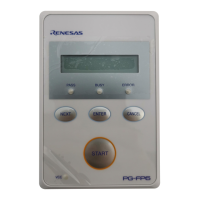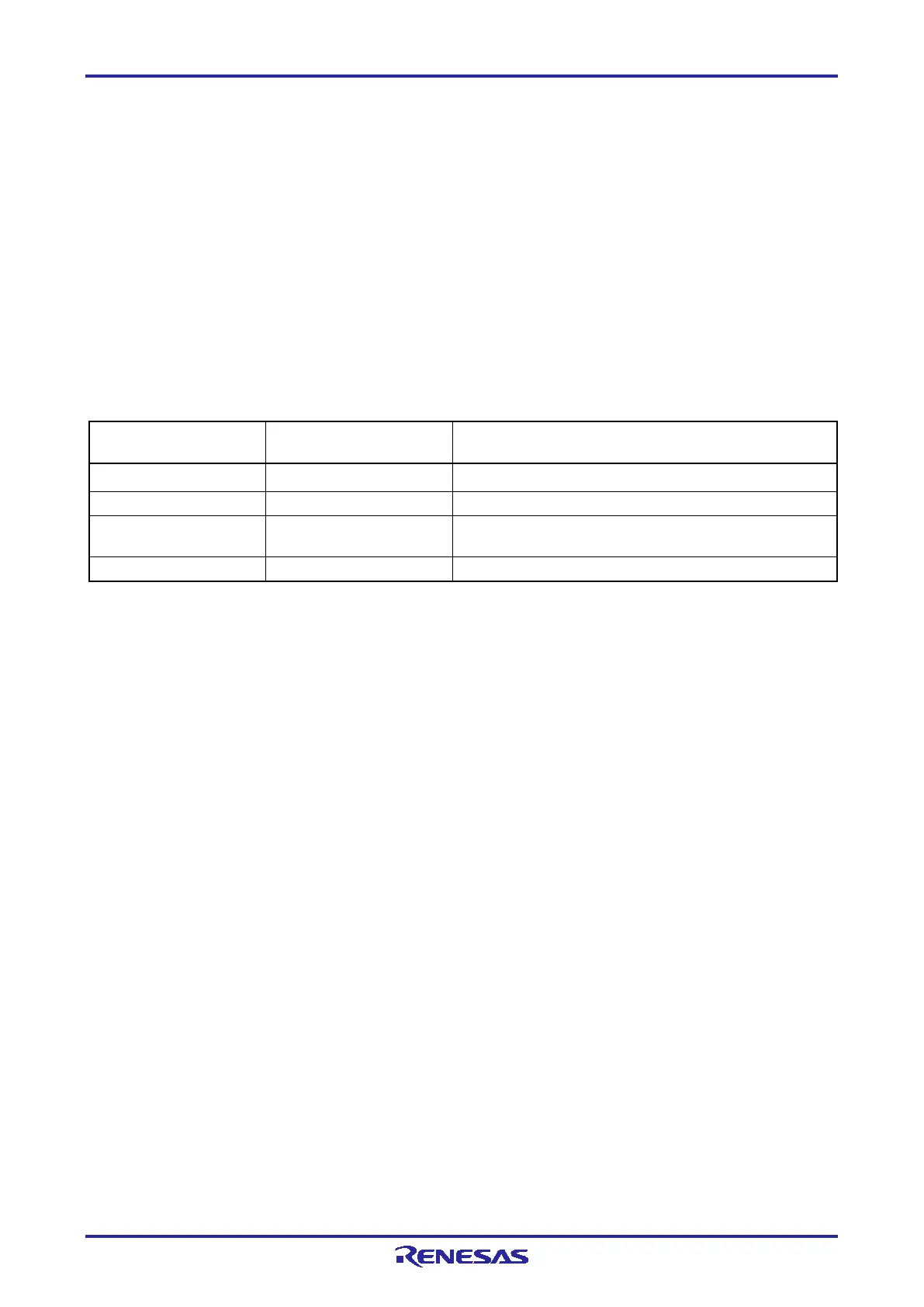PG-FP6 V1.06 5. Usage in Standalone Mode
R20UT4469EJ0800 Rev.8.00 Page 73 of 188
Oct.01.21
5.Usage in Standalone Mode
The FP6 has a standalone mode in which the FP6 by itself can execute the [Erase], [Program], and [Start]
commands without a host PC. This mode is useful for using the FP6 on the production line during mass
production and for upgrading in the field.
• Standard mode
Various functions on the LCD menu can be executed by operating buttons on the main unit or inputting
the remote interface signal (NEXT, ENTER, CANCEL, START, VERIFY, or CLEAR).
• Simple mode
This mode allows changing the active programming areas by the NEXT button. In this mode, the
functions on the LCD menu cannot be executed unlike in the standard mode. Table 5.1 shows
assignments of remote interface signals in simple mode.
Table 5.1 Assignments of Remote Interface Signals in Simple Mode
Remote Interface Signal
CANCEL 5
Depends on the [Start] setting.
NEXT 7
Changes active programming areas. (Increments the
number by 1. Returns to 0 after area 7.)
START 9 Depends on the [Start] setting.
• Bank mode
Refer to chapter 6, Usage of the Remote Connector.
5.1 Details of Buttons, Message Display, and Status LEDs
In standalone mode, command menus are selected and executed using the control button ([NEXT],
[ENTER], [CANCEL], or [START]) on the top of the FP6 main unit.
The selected command menu is shown in the message display, and the result of command execution is
indicated by the message display and status LEDs.
The command menu consists of two levels of menus: a main menu and submenu.
[NEXT] button:
Displays the next menu on the same level.
Selects or executes the menu item currently displayed.
[CANCEL] button:
Cancels the current selection and returns to the previous menu level. The command currently
running cannot be stopped, except for the [Read] command.
[START] button:
Executes the [Start] command. It can be executed from any command menu, and the display
returns to the same command menu after execution.

